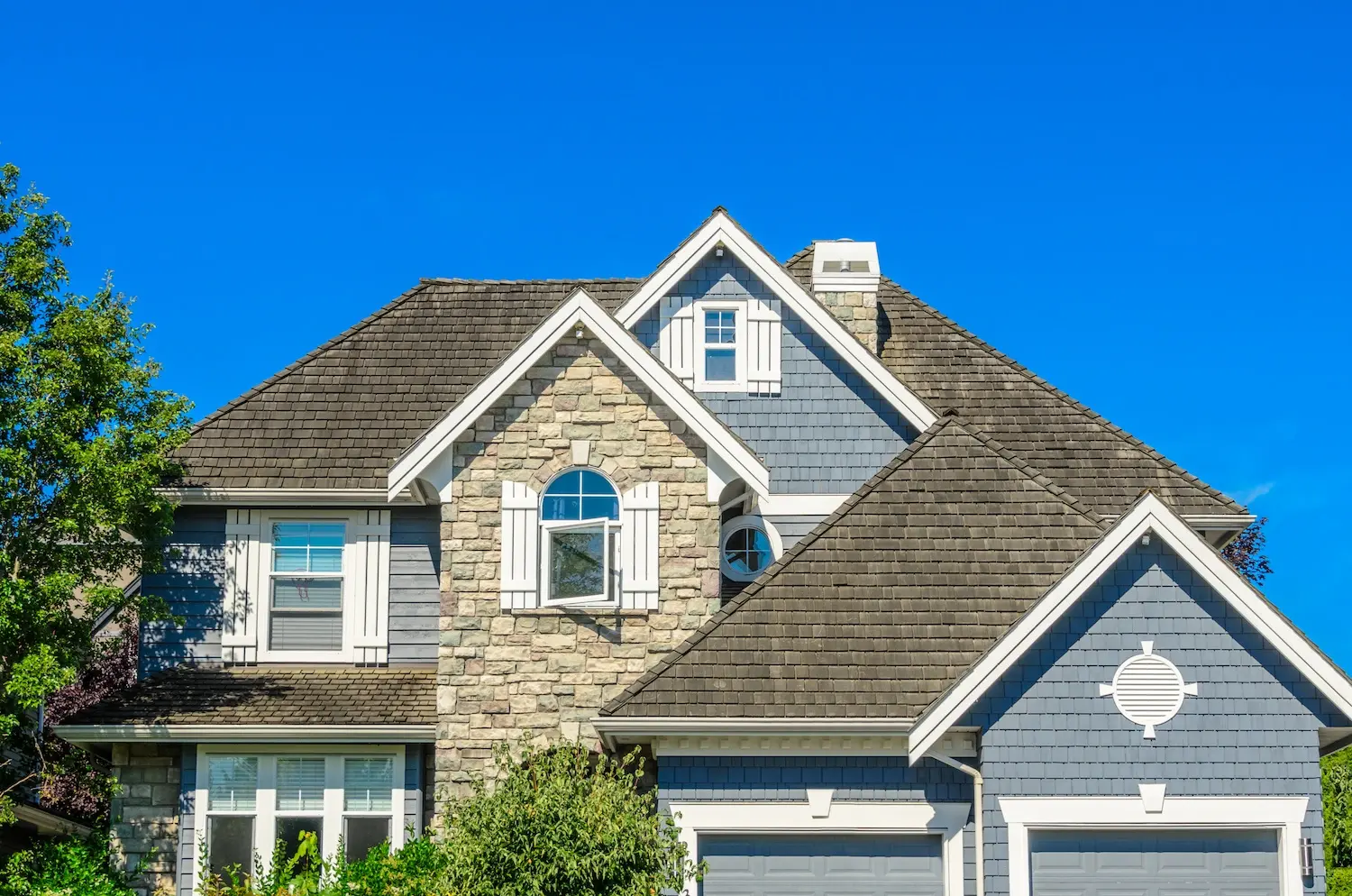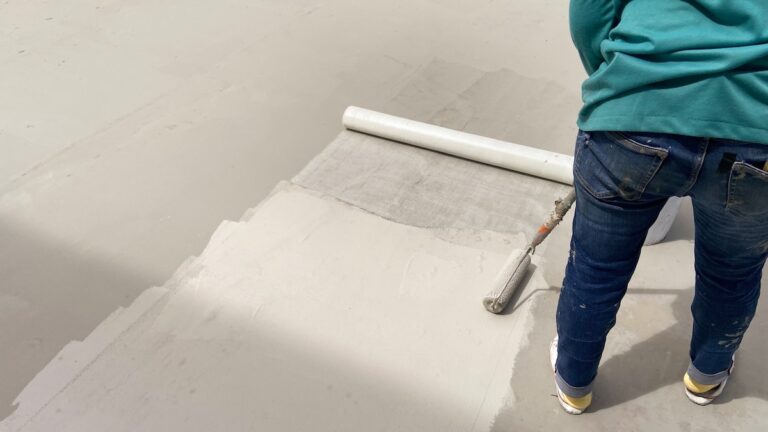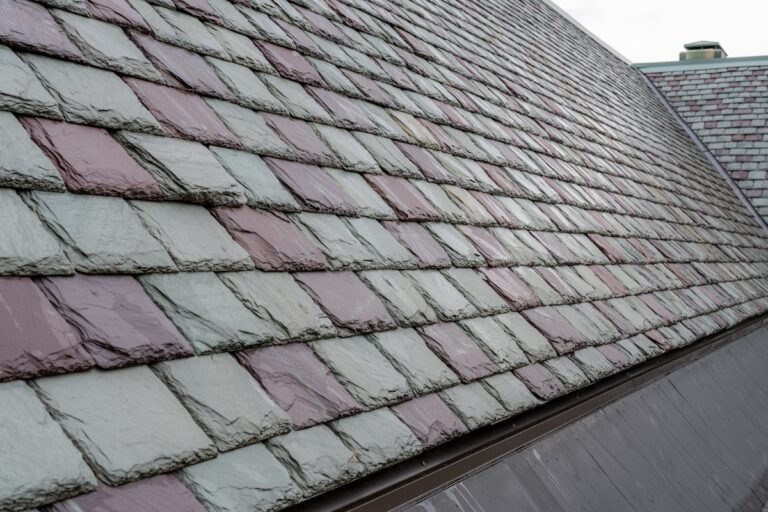When it comes to roofing, every detail matters, especially if you want to ensure the longevity and durability of your home. One crucial component often overlooked by homeowners is ridge cap shingles.
These specialized shingles not only add an aesthetic touch to your roof but also play a vital role in its overall functionality. In today’s blog, we’ll explore:
- What ridge cap shingles are
- Why they are important
- Signs of ridge cap shingle damage
- How to repair them
- Tips for maintaining them
What Are Ridge Cap Shingles?
Ridge cap shingles are specially designed shingles that cover the ridge or peak of a roof. They are different from regular shingles in both shape and function. While standard shingles lie flat to cover the main surface areas, ridge cap shingles are slightly curved or angled to fit snugly over the roof’s highest point.
Composition
These shingles are typically made from the same materials as other shingles, such as asphalt, wood, metal, or composite materials. However, their design allows them to overlap perfectly, ensuring a tight seal against the elements.
Function
The primary function of ridge cap shingles is to provide a finishing touch to the roof while sealing the joint at the ridge. This prevents water from seeping in and causing damage. They also aid in proper ventilation, allowing hot air to escape from the attic and preventing moisture buildup.
Why Ridge Cap Shingles Are Important
So, what makes ridge caps so important? A few things:
- Protection Against the Elements: Ridge cap shingles serve as the first line of defense against harsh weather conditions like rain, snow, and wind. By covering the vulnerable ridge area, they prevent water from infiltrating the roof structure, thereby protecting your home from leaks and water damage.
- Enhanced Ventilation: Ridge cap shingles often come with built-in ventilation features. Proper attic ventilation is crucial for maintaining a consistent indoor temperature and reducing the risk of mold and mildew. Well-ventilated attics also help in prolonging the life of your roof by preventing heat buildup.
- Aesthetic Appeal: Let’s not forget the aesthetic value ridge cap shingles add to your home. They provide a clean, finished look that enhances the overall appearance of your roof. Available in various colors and styles, they can complement your home’s architectural design.
Signs of Ridge Cap Shingle Damage
Wondering if you’ve got a damaged roof? Look for these key signs:
Curling or Lifting
One of the most common signs of damage is curling or lifting of the shingles. This can be caused by poor installation, extreme weather conditions, or simple wear and tear over time. Curling shingles are less effective at protecting your roof and can lead to leaks.
Cracks and Splits
Cracks and splits in ridge cap shingles are another indicator of damage. These can occur due to temperature fluctuations, impact from falling debris, or natural aging. Cracked shingles compromise the integrity of your roof and should be addressed immediately.
Missing Shingles
If you notice any missing ridge cap shingles, it’s a clear sign of damage that needs urgent attention. Missing shingles leave gaps that expose your roof to the elements, increasing the risk of water infiltration and structural damage.
Discoloration or Moss Growth
Discoloration and moss growth are often signs of moisture retention, which can weaken the shingles over time. While discoloration may also result from UV exposure, it’s essential to inspect the shingles closely to determine the root cause.
How to Repair Ridge Cap Shingles:
Before you decide to tackle the repair yourself, consider the complexity of the task. While some minor repairs can be handled DIY-style, severe damage often requires professional intervention. Always weigh the risks and benefits before proceeding.
Tools and Materials Needed
For a basic DIY repair, you’ll need the following tools and materials:
- Replacement ridge cap shingles
- Roofing nails or screws
- Hammer or drill
- Roofing adhesive
- Utility knife
- Pry bar
- Safety gear (gloves, goggles, harness)
1) Safety First:
Ensure you have the necessary safety equipment. Use a sturdy ladder and have someone assist you if possible.
2) Remove Damaged Shingles:
Carefully lift the edges of the damaged shingles using a pry bar. Remove the nails or screws holding the shingles in place.
3) Prepare the Area:
Clean the ridge area by removing any debris or remnants of the old shingles. Apply roofing adhesive to the exposed area to ensure a secure fit for the new shingles.
4) Install New Shingles:
Place the new ridge cap shingles over the prepared area, ensuring they overlap correctly. Secure them with roofing nails or screws, spaced evenly along the ridge.
5) Seal the Edges:
Apply roofing adhesive along the edges of the new shingles to create a watertight seal.
6) Final Inspection:
Inspect the repaired area to ensure everything is securely in place. Make any necessary adjustments to ensure a perfect fit.
☎️ When to Call a Professional
If the damage extends beyond a few shingles or if you’re uncomfortable performing the repair yourself, it’s best to call a professional roofer. They have the expertise and equipment to handle more extensive repairs safely and efficiently.
How to Maintain Ridge Cap Shingles
Want to avoid issues? Maintenance is the key! Here are some easy steps to follow for healthy ridge cap shingles.
Regular Inspections
Conduct regular roof inspections, especially after severe weather events. Look for signs of wear and tear, such as curling, cracking, or missing shingles. Early detection can prevent minor issues from becoming major problems.
Clean Debris
Keep your roof free of debris like leaves, branches, and dirt. Accumulated debris can trap moisture, leading to mold growth and weakening the shingles over time. Use a gentle broom or blower to remove debris without damaging the shingles.
Control Moss and Algae
Moss and algae can retain moisture, which can deteriorate your shingles. Use a moss and algae remover to clean your roof periodically. Installing zinc or copper strips along the ridge can also help prevent moss and algae growth.
Ensure Proper Ventilation
Ensure your attic has proper ventilation to prevent heat and moisture buildup. Good ventilation extends the life of your shingles by reducing the risk of warping and cracking.
Schedule Professional Maintenance
Consider scheduling professional roof maintenance at least once a year. Roofing experts can identify potential issues early and provide necessary repairs or replacements, saving you money in the long run.
Take Care of Your Roof Shingles with Johnson Restoration
Ridge cap shingles are an essential component of your roofing system, offering protection, ventilation, and aesthetic appeal.
Taking proactive steps to care for your ridge cap shingles will not only enhance your home’s curb appeal but also protect your investment. If you’re unsure about the condition of your ridge cap shingles or need professional assistance, don’t hesitate to reach out to a trusted roofing contractor.
Ready to take the next step in ensuring your roof’s longevity and performance? Start by scheduling a consultation with a Johnson Restoration today. Your home deserves the best!






